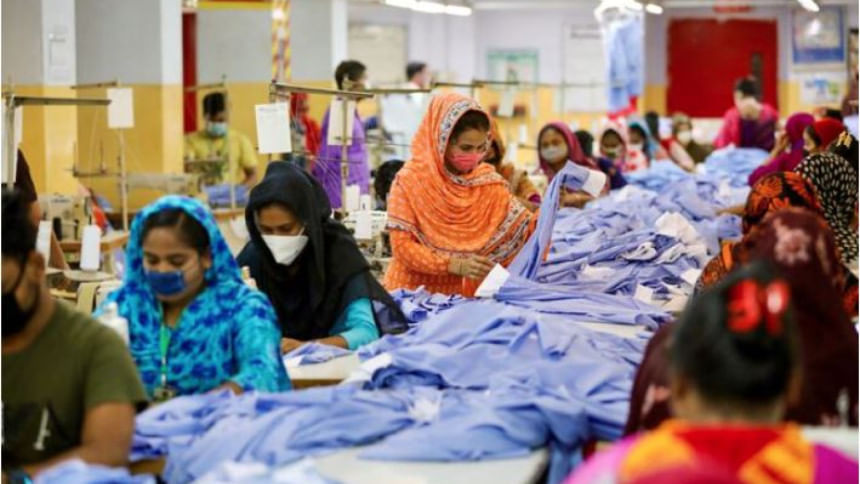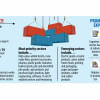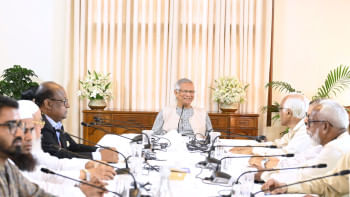US tariffs on India: A rare opportunity Bangladesh cannot miss

Earlier this month, the United States imposed an additional 25 percent tariff on Indian goods, raising duties on some exports to as high as 50 percent—among the highest levied on any US trading partner. As India and Bangladesh export many similar products that compete in the US market, this tariff increase on India is highly relevant for Bangladesh. If India is required to pay this increased tariff over the coming months, Bangladesh will enjoy a relative tariff advantage on these products. Consequently, the market share of Bangladeshi products is likely to expand.
However, this opportunity will not be exclusive to Bangladesh. Other competing countries exporting similar products, such as Vietnam, China, Cambodia and Indonesia, will also benefit from this relative advantage. Bangladesh must therefore prepare adequately. Increasing market share in today's international market can no longer rely solely on cheap labour. It will require an advanced, technology-driven production system.
Among the products exported by both India and Bangladesh to the US market are ready-made garments (RMG), such as shirts, T-shirts, trousers, underwear and jackets. Both countries also export prepared buttons, zips, tags and labels. There is intense competition between India and Bangladesh in the US market for leather goods and various types of footwear. In this sector, India usually has a slight edge. While India is a major exporter of home textiles, Bangladesh is still an emerging player. Additionally, Bangladesh faces smaller-scale competition with India in tea, agricultural products, handicrafts, yarn and plastic goods.
The biggest opportunity to emerge from the tariff hike lies in the potential relocation of investors from India to competitor countries. Several large international companies and brands have established factories in India—either directly or through joint ventures in the RMG industry. Many companies also work with Indian producers at the behest of US and European buyers. With the increase in export tariffs, these companies will naturally consider relocating their factories to countries with comparatively lower tariffs. To calm US customers' nerves, Pearl Global has offered to shift production to its 17 factories in Bangladesh, Indonesia, Vietnam and Guatemala to bypass the steep US levies on Indian imports. Notably, world-famous brands such as Gap and Collar source garments from Pearl Global.
According to reports, Indian exporters have already received letters and emails from US buyers instructing them to halt shipments until further notice. Buyers are refusing to share the additional costs arising from the tariffs and have asked Indian exporters to bear the burden themselves. Analysts predict that US-bound orders may decline by almost half due to the new tariffs, posing a significant risk of heavy losses for Indian exports. To maintain demand, these companies might seek to avoid the tariff altogether—potentially by bypassing production through countries like Bangladesh.
How Bangladesh can seize this opportunity
One thing is certain: Bangladesh cannot capture India's predicted lost market share simply by relying on a relative tariff advantage. India's main strength lies in its robust yarn-based production. Bangladesh, however, depends heavily on India and China for good-quality yarn as a raw material. Unless this dependency is reduced, Bangladesh's competitive position vis-à-vis India will not improve. At present, Bangladesh competes primarily on the basis of cheap labour. But if the country fails to enhance its technology-based production system—as China and India have done—the advantage of cheap labour will soon erode. The best way forward is to focus on building our own capabilities through innovation and technology.
The majority of Bangladesh's export sector lies in private hands. However, both the government and the private sector must invest equally in innovation and technological development. The government must take the lead, while the private sector must rise to the challenge. Investment is needed in automated machinery, digital cutting and sewing technology, and waste reduction systems. Such investment will help reduce both production costs and lead times. To meet the expectations of world-famous brands, Bangladesh must also build its own modern design departments, improve proficiency in design software and develop the ability to track international trends. Equally important is training workers and managers in technology use, expanding skills development centres and encouraging innovative thinking.
In RMG and other export industries, Bangladesh still relies on imported raw materials. To reduce costs and shorten production times, the country must boost local production of cotton, yarn and fabric. At the same time, rapid sourcing capabilities must be developed. The government must also ensure the swift implementation of investment-friendly policies and infrastructure development initiatives.
The US has indicated that it retains the flexibility to increase or decrease these countervailing duties in the future. This means the level of tariffs will depend not only on the capabilities of exporting countries but also on their bilateral relations with the US. The most effective way to strengthen Bangladesh's position is by embracing innovation and technology—something India and Vietnam are already pursuing successfully. Bilateral relations, too, are shaped by a country's inherent strengths and capacities. For a geographically important nation like Bangladesh, managing bilateral relations carefully is crucial, given that multiple parties have geopolitical and economic interests at stake.
Earlier on August 7, a new tariff on US-bound exports from Bangladesh came into effect, raising the effective tariff rate (ETR) for Bangladeshi goods exported to the US to 36.5 percent from 16.5 percent. The Trump administration imposed the same 20 percent reciprocal tariff on Vietnam, currently the second-largest apparel supplier to the US, bringing its ETR to 36.5 percent as well. However, goods transshipped through Vietnam now face a 40 percent duty, offering Bangladesh a competitive edge. Moreover, since China's countervailing duty rate is still unresolved, Bangladesh will have to wait a little longer to calculate the final balance of profit and loss. Some Chinese and Bangladeshi exports overlap in the US market. China, the largest supplier, currently faces a 55 percent tariff, with negotiations on a reciprocal rate still ongoing. If China secures a comparatively lower countervailing duty, it will pose a challenge for Bangladesh. Conversely, if a higher tariff is imposed on China, Bangladesh will benefit. Restricting the free movement of Chinese goods into the US market has been a consistent theme in the duty debate for several months now. Given the rationale behind the US decision to impose countervailing duties in April, China is not expected to gain much.
To avail the advantage of the newly imposed tariff on competitors and further consolidate Bangladesh's position in the global market, it needs a high production capacity, along with advanced technology-based production. If Bangladesh fails to act now, this opportunity will slip away to better-prepared competitors. Building technological strength and reducing dependency on imports is not just an option; it is the only way forward.
Nur-E-Alam is a writer and an economic analyst.
Views expressed in this article are the author's own.
Follow The Daily Star Opinion on Facebook for the latest opinions, commentaries and analyses by experts and professionals. To contribute your article or letter to The Daily Star Opinion, see our guidelines for submission.

 For all latest news, follow The Daily Star's Google News channel.
For all latest news, follow The Daily Star's Google News channel. 








Comments